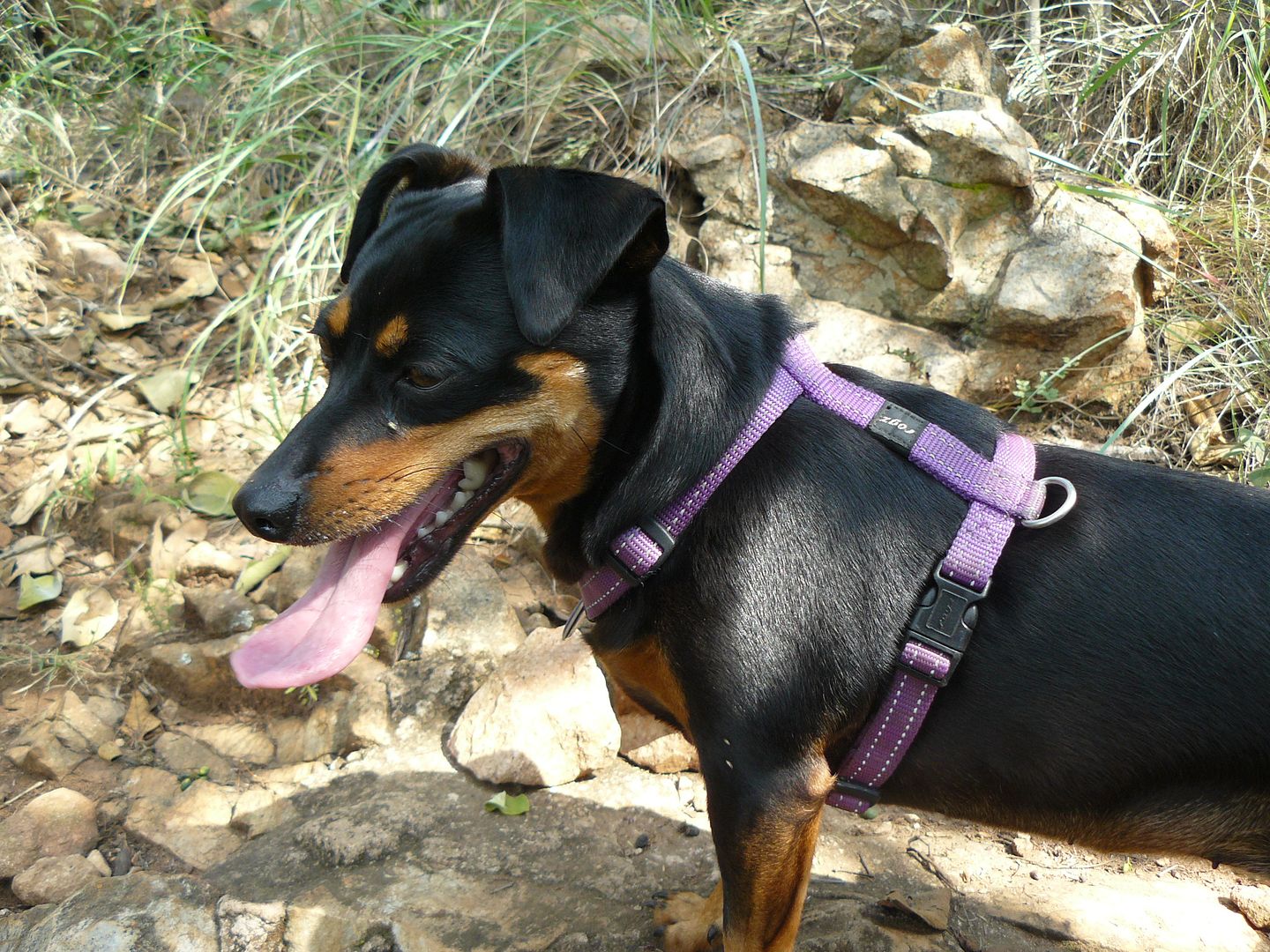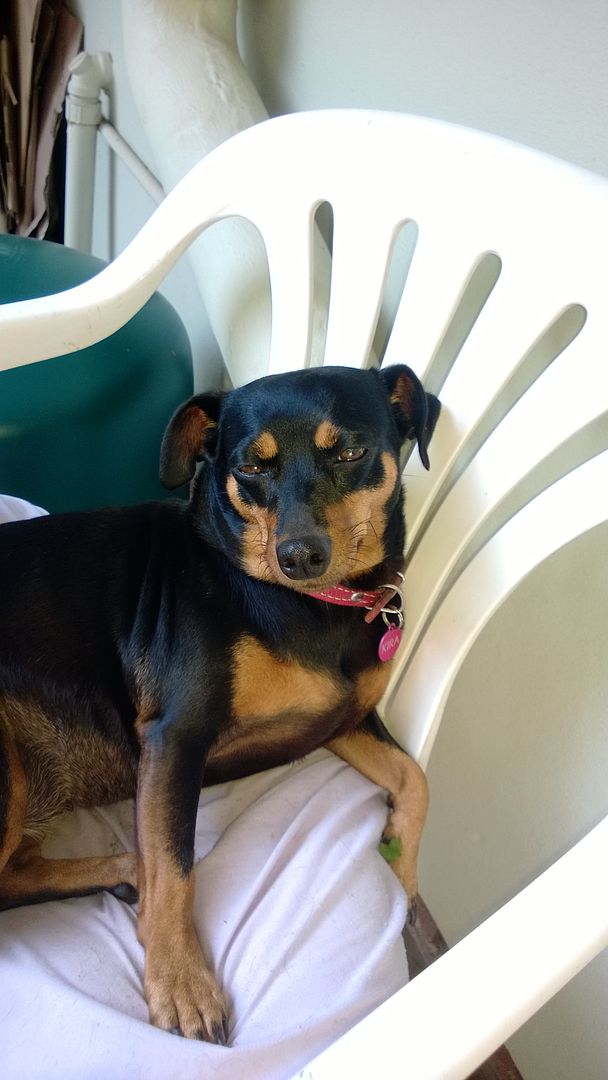Here's the lady of the moment, in case anyone forgot that picture:
Dogs can't sweat except under their paws and on their noses, something that makes it rather difficult to keep cool. Their fur provides some thermal insulation and they pant as their primary way of cooling down - evaporation on their tongues lowers their temperature. When they get very hot, the blood vessels on the bottom of their tongue dilate, increasing the surface area - causing a bowl-shaped tongue that is extra pink or reddish.
Talos demonstrates this beautifully:
 |
| "Some water, maybe?" |
Side view:
 |
| "no, really, Nina, water... not flash photography!" |
If you see this, it's definitely time for a water break. Wetting your dog can help cool them down too, but some get zoomies if they're wet, which works a bit against you in terms of getting their temperature down.
Why does this matter?
Well, heat stroke can set in in mere minutes, and can be fatal. It affects the brain, heart, liver and nervous system - a pretty comprehensive list of things your dog needs to keep on truckin'.
Now the bowl-tongue is a fairly early symptom that your pup is getting too hot - a great time to cool down. If, however, you miss it, some later symptoms include:
Heavy panting
Excessive thirst
Excessive thirst
Excessive drooling
Increased pulse and heartbeat
Elevated body temperature (40ºC or 104ºF and up - if you have a rectal thermometer available this is a good way to keep track)
Glazed eyes
Glazed eyes
Bright or dark red tongue, gums
Staggering
Staggering
Vomiting and bloody diarrhea
Weakness, collapse
Seizures
Unconsciousness
Weakness, collapse
Seizures
Unconsciousness
If it gets this bad, you must immediately cool your dog down, and call the vet. At 42ºC, or 109ºF, heatstroke sets in, leading to rapid death. If your dog is responsive, giving them small sips of water will help. It's worth talking to your vet about a heat stroke procedure next time you're there.
Pugs and other short nosed breeds, old dogs and puppies (and of course sick dogs, and dogs that are not used to hot temperatures) are at a greater risk of heatstroke.
Be careful, and carry water!
.JPG)

